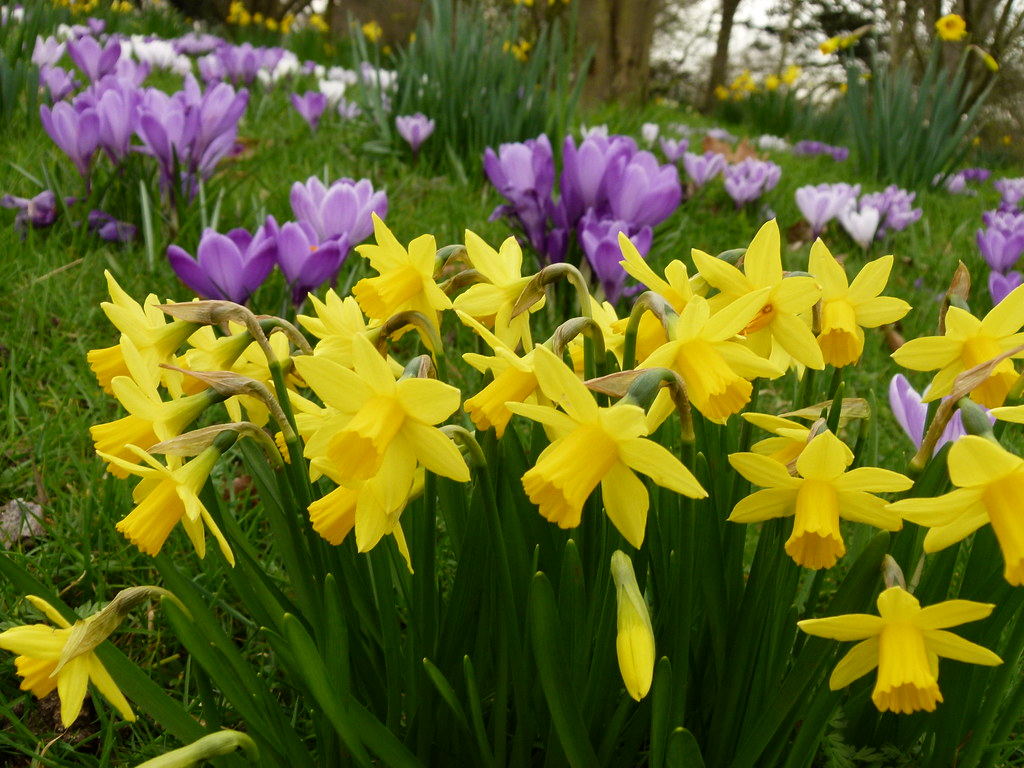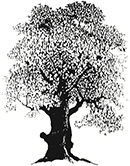MAINE-LY GARDENING: Flowering shrubs for Central Maine springtime – Part I

 by Jude Hsiang
by Jude Hsiang
While the daffodils and crocuses are just poking their green noses out of the soil, forsythia begin to bloom. This shrub is a favorite just because the little neon yellow flowers cover the long stems as we are becoming even more tired of snow and mud. Some people prune forsythia into balls and hedges, which it will tolerate, but it wants to grow into a fountain shape. Those long stems will root if they touch the ground and, in a few years, can become a jungle of crisscrossing square branches with small leaves. It’s not the most beautiful shrub for most of the year, but it shouts, “Welcome Spring!”
For many New Englanders spring means lilacs. They’ve been grown here for centuries and with their preference for a more alkaline soil than our native plants, are often found around long abandoned cellar holes nourished by a bit of limestone. In a range of lavenders—some reddish, some more blue—and crisp white, lilacs with their lovely fragrance are one of our “must haves.”
In addition to the common lilacs, which is a direct translation of their scientific name Syringa vulgaris, we can also plant Korean lilacs which are a little smaller in every respect. These re especially useful for smaller spaces. They don’t usually have the same rich perfume, but some varieties will re-bloom a little later during the season which is a plus for some gardeners. Lilacs should be pruned within a couple of weeks after the flowers fade, to assure a bounty in the following year. Just clip off all the flower clusters, or if the plants are getting to tall to reach easily, or covering the windows, cut them further back. Lilacs will sprout all around the base of the main shrub, and those sprouts can be dug and transplanted.
Another group of shrubs for our area are the Viburnums. There are several species and a wide range of cultivars available. Some have a strong sweet fragrance: others almost none. Some bear their flowers in “snowballs” and others have tiny clusters of flowers of more interest to insects but produce berries that attract birds. Most viburnums have white flowers but there are some pink varieties, and many have good red fall foliage. You can choose from rounded shrubs that might only reach six feet, or small trees whose branches are covered with flat blossoms and stretch out in layers. Viburnums rarely need pruning, but if they are becoming too large, it’s best to prune right after flowering, like lilacs.
These three groups of flowering shrubs are hardy and need little care after proper planting and appropriate watering in their first two years. They are mostly pest-free, except for four species of viburnum that can defoliated by an invasive beetle. A good nursery or garden center will help you avoid purchasing one of these species: V. dentatum (arrowwood viburnum, V. nudum, (smooth withered), V. opulus, (European cranberry), V. opulus ssp. trilobum, (.American cranberry). There are lots of other fine viburnums to choose from.
These fine shrubs will provide decades of beauty with very little attention so why not add one or more this spring?
In my next article I’ll cover flowering shrubs for summer and beyond, including some favorite natives.
© Judith Chute Hsiang
Jude Hsiang is a retired Extension Master Gardener instructor and member of the China Community Garden Project.
Responsible journalism is hard work!
It is also expensive!
If you enjoy reading The Town Line and the good news we bring you each week, would you consider a donation to help us continue the work we’re doing?
The Town Line is a 501(c)(3) nonprofit private foundation, and all donations are tax deductible under the Internal Revenue Service code.
To help, please visit our online donation page or mail a check payable to The Town Line, PO Box 89, South China, ME 04358. Your contribution is appreciated!


Leave a Reply
Want to join the discussion?Feel free to contribute!